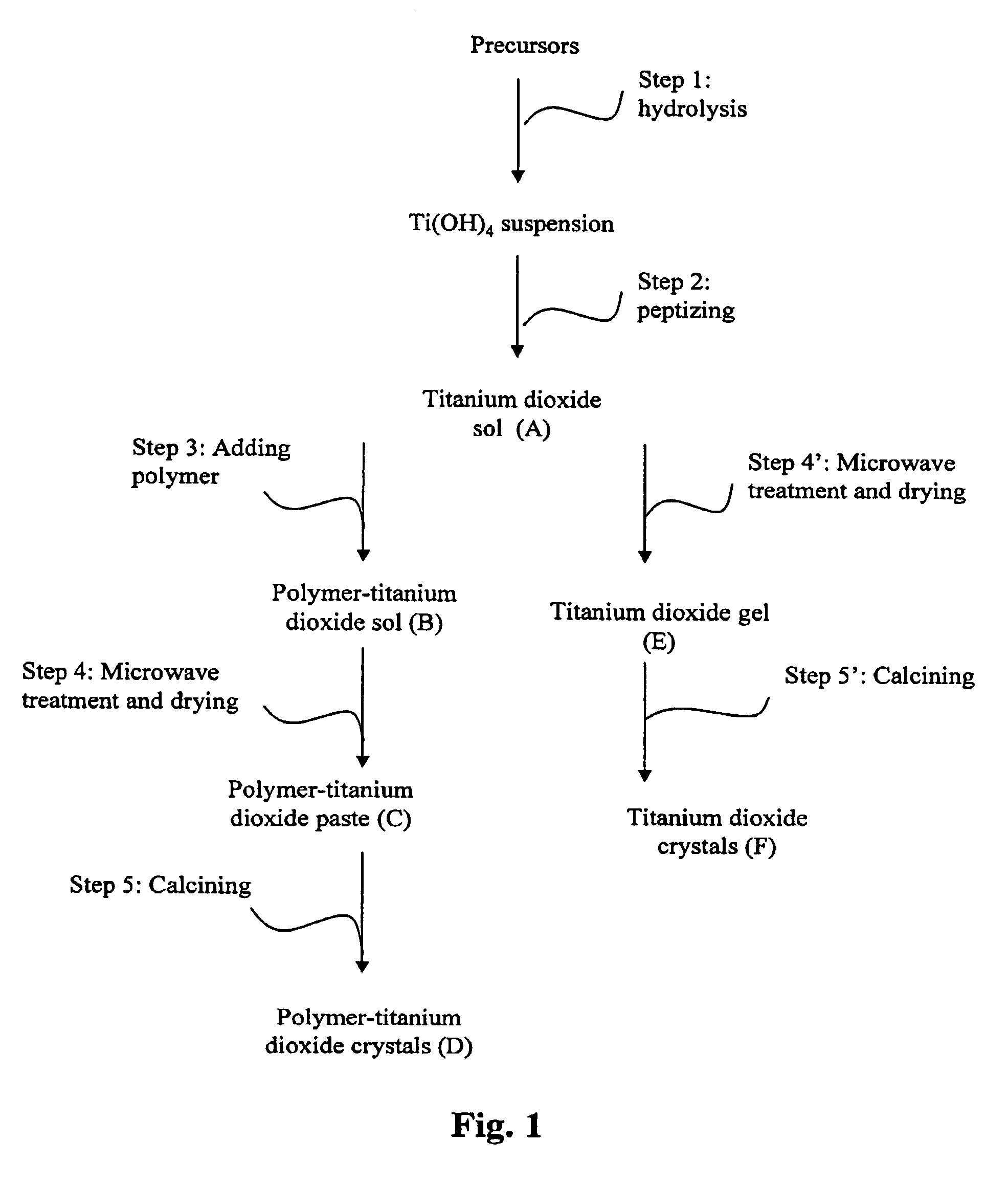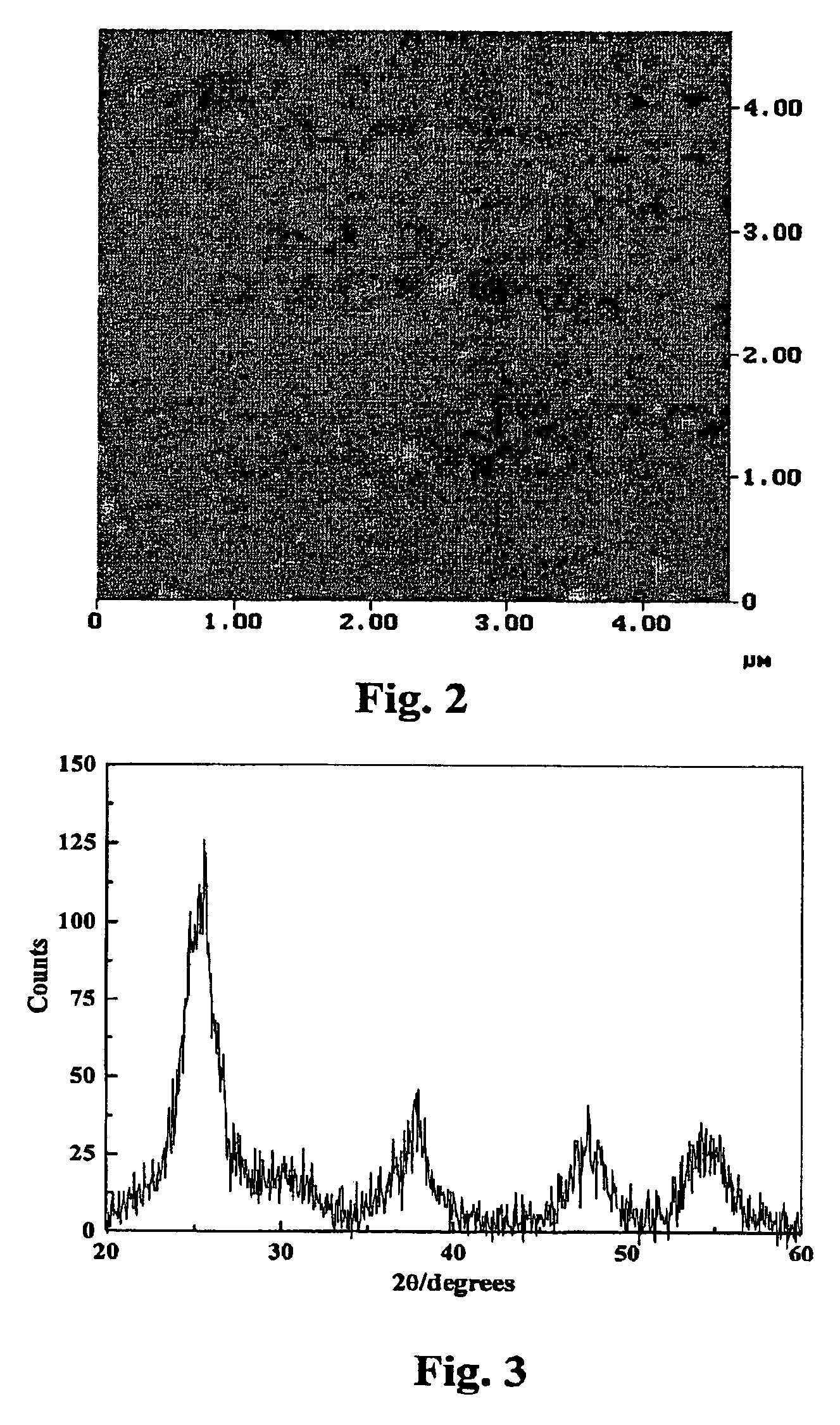TiO2 material and the coating methods thereof
a titanium dioxide and coating technology, applied in the field of titanium dioxide crystals, can solve the problems of titanium dioxide coating prone to scratches, unsatisfactory photocatalytic activity, contamination of air with volatile organic compounds, etc., and achieve the effect of similar germicidal
- Summary
- Abstract
- Description
- Claims
- Application Information
AI Technical Summary
Benefits of technology
Problems solved by technology
Method used
Image
Examples
example 1
Hydrolysis of Titanium Precursor (Step 1)
[0065]1) 1M of titanium isopropoxide (TIP, ACROS, 98%) in isopropanol (BDH, 99%) was prepared,[0066]2) 28 ml of 1 M TIP-isopropanol solution was slowly added to 72 ml of water under vigorous mixing,[0067]3) The resulting mixture was stirred for 1 hour at 30° C. to ensure complete hydrolysis of the titanium isopropoxide. A white suspension of (TiOx(OH)y) X=0−2, Y=4−2X) was obtained.
example 2
Peptization of Hydrolyzed Titanium Precursor (Step 2)
[0068]1) 1 M of nitric acid solution was added to the hydrolyzed titanium precursor obtained in Step 1 to give a [H+] / [Ti4+] of about 0.4,[0069]2) The mixture was heated to at 70° C. to evaporate the isopropanol,[0070]3) The mixture was cooled to room temperature and kept well mixed until a stable sot is formed,[0071]4) The concentration of titanium dioxide sol was adjusted to 0.28M.
example 3
Addition of Polyethylene Glycol (PEG) Into the Titanium Dioxide Sol (Step 3)
[0072]1) 5 weight percent of polyethylene glycol (PEG) with an average molecular weight of 400 g / mole (ACROS) was added to the titanium dioxide sot (A) prepared in step 2 under vigorous stirring.[0073]2) The mixture was stirred for 5 hours at room temperature to obtain the polymer-titanium dioxide sol (B).
PUM
| Property | Measurement | Unit |
|---|---|---|
| power | aaaaa | aaaaa |
| water content | aaaaa | aaaaa |
| sizes | aaaaa | aaaaa |
Abstract
Description
Claims
Application Information
 Login to View More
Login to View More - R&D
- Intellectual Property
- Life Sciences
- Materials
- Tech Scout
- Unparalleled Data Quality
- Higher Quality Content
- 60% Fewer Hallucinations
Browse by: Latest US Patents, China's latest patents, Technical Efficacy Thesaurus, Application Domain, Technology Topic, Popular Technical Reports.
© 2025 PatSnap. All rights reserved.Legal|Privacy policy|Modern Slavery Act Transparency Statement|Sitemap|About US| Contact US: help@patsnap.com



